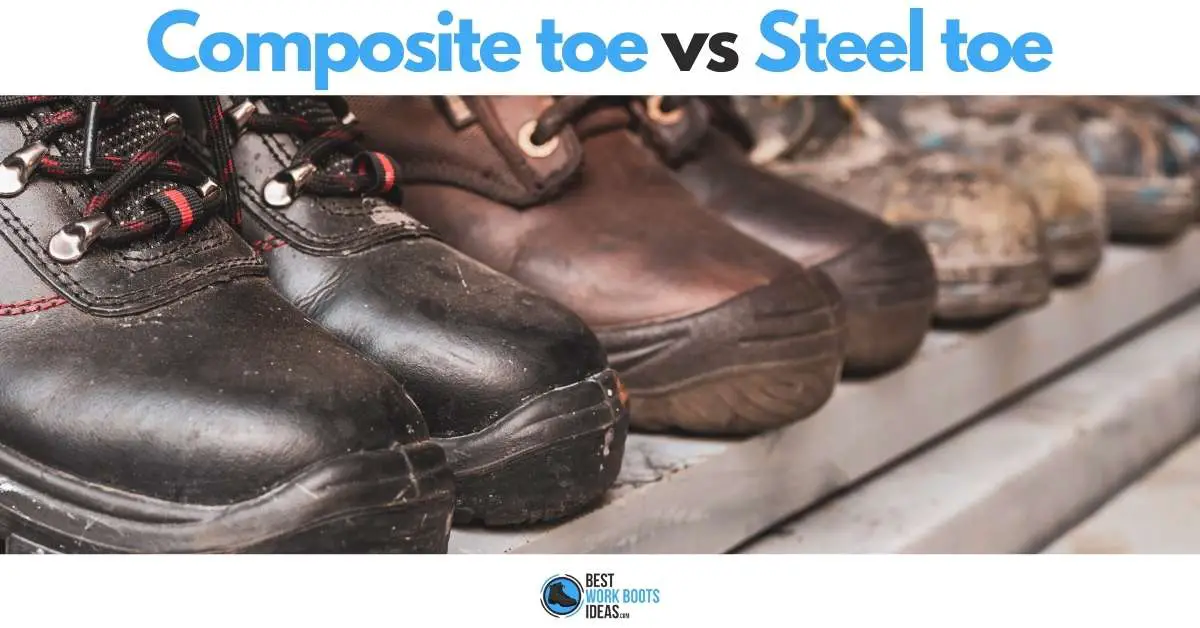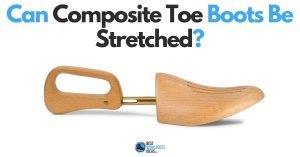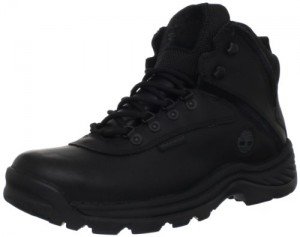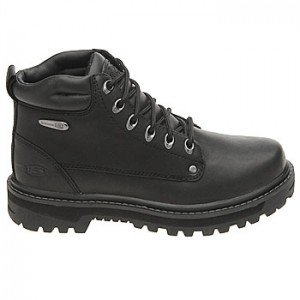Differences Between Composite Toe vs Steel Toe Cap: Know Your Safety Toes

Knowing the different safety toes styles is a crucial aspect of buying new boots.
Yes, they’ll all protect your feet, but they deliver different features.
Today we’re going to get into the difference between the traditional steel toe and the modern composite toe cap.
It seems like it was only yesterday that you grabbed your new pair of boots, but as you look down at them it’s obvious they need to be replaced.
If they were good, reliable boots, this is a bittersweet experience.
If they were terrible boots, it probably feels more like “good riddance!”
Either way, you’ll need to know about the different parts of a work boot so you can effectively search for the pair that delivers what you need most.
One of the primary features that distinguishes work boots is the presence of a safety toe.
In the past, there were boots with a steel toe, and those without.
In the years since the first steel toe boots were introduced by Red Wing in the 1930s there have been advancements.
First workers were introduced to the alloy toe, and then in the following years, the composite toe work boot.
If you’re wondering what makes a composite toe different from a steel toe, you’re not alone.
Please continue reading and I’ll get into the specifics so you’ll have a complete understanding of these two safety toes and their characteristics.
Contents
The Toe Box / Toe Cap Overview
Before getting into the differences between steel and composite toes, we should clarify what that means.
The “-toe” refers to the material used to build the toe cap.
The toe box is the area in the front of a boot where your toes sit.
Above them, built into the boot, is the toe cap.
This is the hollow quarter-circle that should protect your toes from anything falling on or crushing them.
The material that the toe cap is made of usually becomes part of the boots’ title, as this is a primary selling point for those buying protective footwear.
If you’re looking at a soft toe boot, be warned, this refers to the absence of any sort of toe protection.
These boots are not suitable for jobs that have requirements for OSHA approved footwear.
Basically, any kind of work where heavy objects could fall and hurt your feet.
Now that we have those terms covered, let’s continue onward
Foot Protection with Composite Toe
Composite is a blanket term that refers to a variety of non metal materials that include fiberglass, plastic, carbon fiber, and even kevlar.
Yes, that’s the same material in bulletproof vests.
These materials provide a viable, non-metallic alternative to keep your toes safe.
The Benefits of a Composite Safety Toe
Light On Your Feet
Composite toe caps are far and above the lightest option available on the market.
They can weigh up to 70% less than steel.
This makes them a great choice for anyone who finds themselves going up and down all day.
Stay Dry At Work
Composite materials can offer excellent levels of breathability.
This will allow your foot to stay dry regardless of how much heat you create through work.
A study done on the effects of the microclimate in a worker’s boot showed there was a decrease of 5.4 degrees Fahrenheit and a 37% lower humidity value in boots with a composite toe.
Those are numbers that could make a noticeable difference with not only your comfort, but also your health.
Non-Conductive Peace of Mind
No matter what type of material your composite toe is made of, it will not conduct the surrounding elements.
This makes it great for anyone that spends a lot of time outdoors in particularly harsh climates where the hots are hot and the colds are even colder.
No one likes to be uncomfortable, that’s a given, but your comfort might be an indicator of your safety.
An OSHA guide on cold-weather injuries shows that a composite toe could keep you safer than metal toe caps.
Composite toe safety shoes are also non-conductive to electricity.
This makes them a great choice for anyone that is frequently at risk of electric shock.
An extra little perk that you’ll get from composite toes is that they won’t set off a metal detector.
This is probably not something that will affect most of us, but for those of us working in ports, airports, and other highly controlled settings, you will save a ton of time not taking your boots on and off.
The Downsides of Composite Toes
Bulkiness
Composite toes are often a little bit bulbous, this can be problematic for two reasons.
One, it’s not as stylish to have a big toe cap popping out from the front of your boot.
Two, the extra reach of the toe cap can have you a little clumsy on your feet.
Even if it seems like a little difference, you might find yourself bumping and kicking things by accident.
Ideally, you would choose a composite material like carbon fiber or Kevlar, problem solved.
That said, many composites are made of fiberglass or plastic compounds that require a larger area to offer the same levels of safety that you’ll get from more traditional toe caps.
Cost
As I said in the section on steel, the cost should not be a factor when deciding on safety.
With my disclaimer now written down, I can say that composite toes are notably more expensive than their metal competitors.
I often have my suspicions that the term “composite toe” is the thing that allows manufacturers to charge more.
It’s not always due to a proportionally more expensive material cost.
If you find boots with kevlar or carbon fiber toe caps, I’m a little more comfortable saying to spend the extra cash.
With plastics and fiberglass constructions I feel the costs exceed the benefits.
Failure Method
Some composite materials are more likely to fail all at once than other materials.
I exclude Kevlar and some carbon fibers from this distinction, as they perform extremely well in resisting stress without breaking.
Having noted that, toe caps made of fiberglass and thermoplastics are at risk of giving way all at once.
The materials themselves are designed to be firm, and are incapable of bending before they break.
Please don’t take this to mean that certain composite toe caps aren’t ASTM approved, they all should be. I’m just noting that when they fail, and at certain weights all materials will fail, they don’t give you warning by bending in the way steel does.
Steel Toe
The Benefits of a Steel Toe
No Surprises
It is generally accepted that steel offers the greatest overall levels of protection for the person wearing it.
It has been trusted for thousands of years as the material that provides its users the greatest strength available.
Bend, Not Break
Unlike composite materials, steel has the courtesy to bend before it fails.
This gives you warning that your toe cap has done its job to keep your feet safe and it’s time to grab a new pair of boots.
Steel doesn’t crack, rip, or split under the amount of stress a boot would experience.
In the unlikely case that you would experience that level of force, you don’t have to worry about boots because you’re likely dead.
Affordability
It shouldn’t be a primary concern, but it’s definitely an added perk that steel is definitely the cheapest of the toe caps.
This makes steel toe boots kinder on your budget than other styles.
If there were no other factors to consider, this article would end right here, but there are other factors.
The Downsides of Steel Toes
The Weight is Not a Gift
Steel is not perfect, and there are a couple of downsides to grabbing a pair of boots with steel toes.
Boots made with steel are without question heavier than their competition.
Steel gets much of its strength through great density, and with density comes weight.
If you are someone walking up and down stairs or ladders all day, steel might not be for you.
Even a slightly heavier boot is going to result in you lifting a substantially larger amount by the end of the day.
The added weight will also create an imbalance in your foot, and your body will have to work harder to maintain its natural stride.
This can actually result in injuries that would not have happened otherwise.
Those with a past injury to the foot, ankle, or knee might also want to steer clear of steel.
Any extra weight strapped to your feet is more likely to irritate your injury and defeat the whole purpose of buying safety boots: to stay healthy!
Conducive to Discomfort
Steel does a poor job of insulating the person that’s wearing it.
This can mean a number of things.
Whether you’re in scorching heat or freezing cold, your steel toe will definitely work to remind you of this fact.
Steel will act as a freezer or heater, depending on the conditions, and there’s nothing that can be done to change this fact.
Additionally, steel, like all metals, will conduct electricity.
I don’t think this needs much explaining, it just needed to be said as a reminder.
Just because you can’t see the steel toe in your boot doesn’t mean that an electrical current won’t find it.
No Breathability
Steel is not a breathable material and will not allow for good ventilation in the front of your boot.
This may not seem like a big concern when you’re buying the boot, but it’s a situation that warrants your attention.
This can result in a situation that even a podiatrist would call a foot condition, so it’s not always minor discomfort.
An alternative to the steel cap is an alloy toe, but thats outside the scope of this article.
The Final Comparison
| Steel Toe | Composite Toe | |
| Weight of material | Notably heavier | The lightest material available |
| Breathability levels | Very low breathability | Excellent breathability |
| Temperature transfer | High levels of transfer | Little to no transfer |
| Electrical conduction | Highly conducive to electricity | Non-conducive |
| Protection | The best available | OSHA approved, substantial |
| Failure method | Denting, bending | Breaks, cracks |
| Affordability | More affordable | More expensive |
Believe it or not, but I actually take writing these articles seriously.
I understand there’s a ton of people in cyberspace that copy, paste, and call it a day without any concerns for what they just wrote.
I’m not among them.
I spend quite a while looking for actual data to prove what I’m saying in these articles.
I also use my own experiences as a contractor who wore work boots to frame my thoughts.
In that spirit, I put my money on steel toes over the broadly titled “composite toe.”
I really like Kevlar and carbon fiber toe caps, I’d feel entirely comfortable in either of those.
However, the reality is that more composite toe caps are going to be made of fiberglass and thermoplastics, and I wouldn’t feel comfortable recommending either of those to someone who might be in danger.
As always, please refer to your PPE manual, line manager or industry best practices to ascertain the best choice for you.



![Cement Construction Boots: Your Complete [FREE] Guide](https://www.bestworkbootsideas.com/wp-content/uploads/2021/06/cement-construction-boots-featured-image-300x157.jpg)



